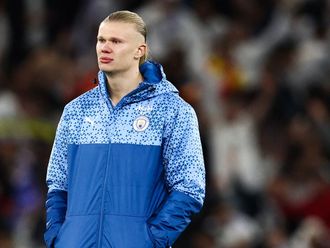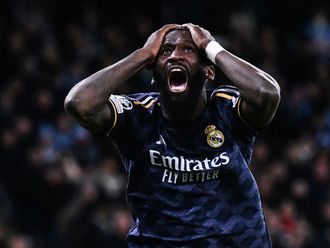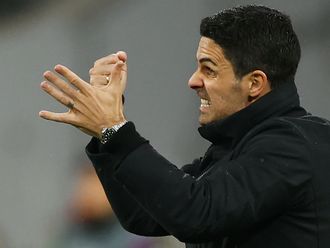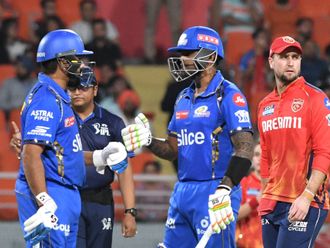Dubai: It is the kind of message you dread waking up to as an expat.
A life or death one from home that takes your breath away — with the added knowledge that you’re a seven-hour flight away and there’s nothing you can do about it.
And as my alarm woke me up and I lifted my phone to turn it to snooze on Friday morning, there it was. The first thing I saw on the blinking gadget.
“Morgan Schneiderlin has been assigned the No. 2 shirt at Everton,” my friend, a lawyer no less, informed me of the Merseyside club’s new midfield signing from Manchester United.
My learned friend — perhaps unnecessarily, and maybe a tad harsh, but certainly one I thoroughly agree with — then added: “He doesn’t deserve to live.”
I’ll double check the next time I’m back that dear chum doesn’t in fact defend murderers during the day then become one at night, but I do, 100 per cent, concur with him.
One of the reasons we are mates is that we both have a reverence for football numbers. We even take little wagers on what numbers certain players will be allocated when they sign. Yes, we are that sad.
There is, however, a serious side to it.
Every football fan is likely to have played in a team when they were younger, no matter whether it was pro, professional youth level, boys club or school team. And they are likely to have worn a number on their back, probably one from 1-11 (unless you got stuck on the bench a lot. Ha!).
An appreciation of numbers and what they mean on a football pitch is part of the heritage and tradition of the game.
Number 2 is, and always will be, associated with right-back.
It is not, and never should be, adorned by a midfielder.
It is just plain wrong and means the Frenchman joins his compatriot William Gallas (a centre-half who wore 10 at Arsenal), former England international Glen Johnson (a right-back who wears 8 for Stoke City), and others too, in a horrible little Premier League club.
Much mirth was directed at Championship side Sheffield Wednesday earlier this season for allocating a number of new signings jerseys in the 20s and 30s when numbers in 1-11 were free. More mirth, anger from some, that one of the 1-11 free, number 6, went to Scottish international striker Steven Fletcher.
Speaking of Scottish international strikers, it appears it is not a new thing. Scotland’s Euro 92 squad was numbered in order of caps — which meant star striker Ally McCoist was poaching up front with 5 on his back.
A look at the Everton squad list and you can forgive Schneiderlin a little (he seems a nice enough fellow, there were reports he was dating a shop assistant rather than a pop star or glamour model like most pros). Everything bar 13 (unlucky for some) up to the late 30s was already allocated. But worse than trotting out in 44 or a horrendous 79 or 88 that some players fancy these days, he should have refused the ridiculousness of wearing 2 and lumped the higher squad number. Until the end of the season when the likes of Darron Gibson and James McCarthy will probably move on, freeing up 4 or 16 — proper midfield squad numbers.
It may seem frivolous to some, but in a day and age when fans are asked to pay a small fortune for tickets and endure kick-off times when they’d usually be eating breakfast, no Everton supporter will want to be the one being laughed at for wearing a shirt with a midfielder’s name and 2 on the back.
Especially when on top of the £50 (Dh223) plus for the jersey you then have to fork out about £1 a letter for Schneiderlin.
And finally ...
It was a tad disappointing to hear Celtic manager Brendan Rodgers tell local media earlier this week that UAE star Omar Abdul Rahman was not a player he had heard of. Abdul Rahman is entitled to a wonderful career at home with Al Ain — but it would be interesting to see him strut his stuff in Europe. And you’d think that a club like Celtic, who he was previously linked with, would maybe be the kind of club where he could.












